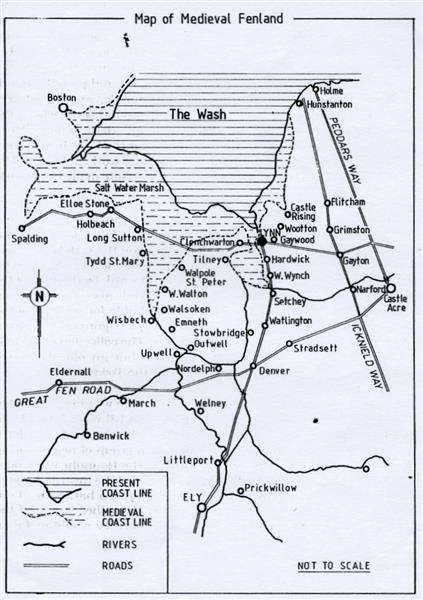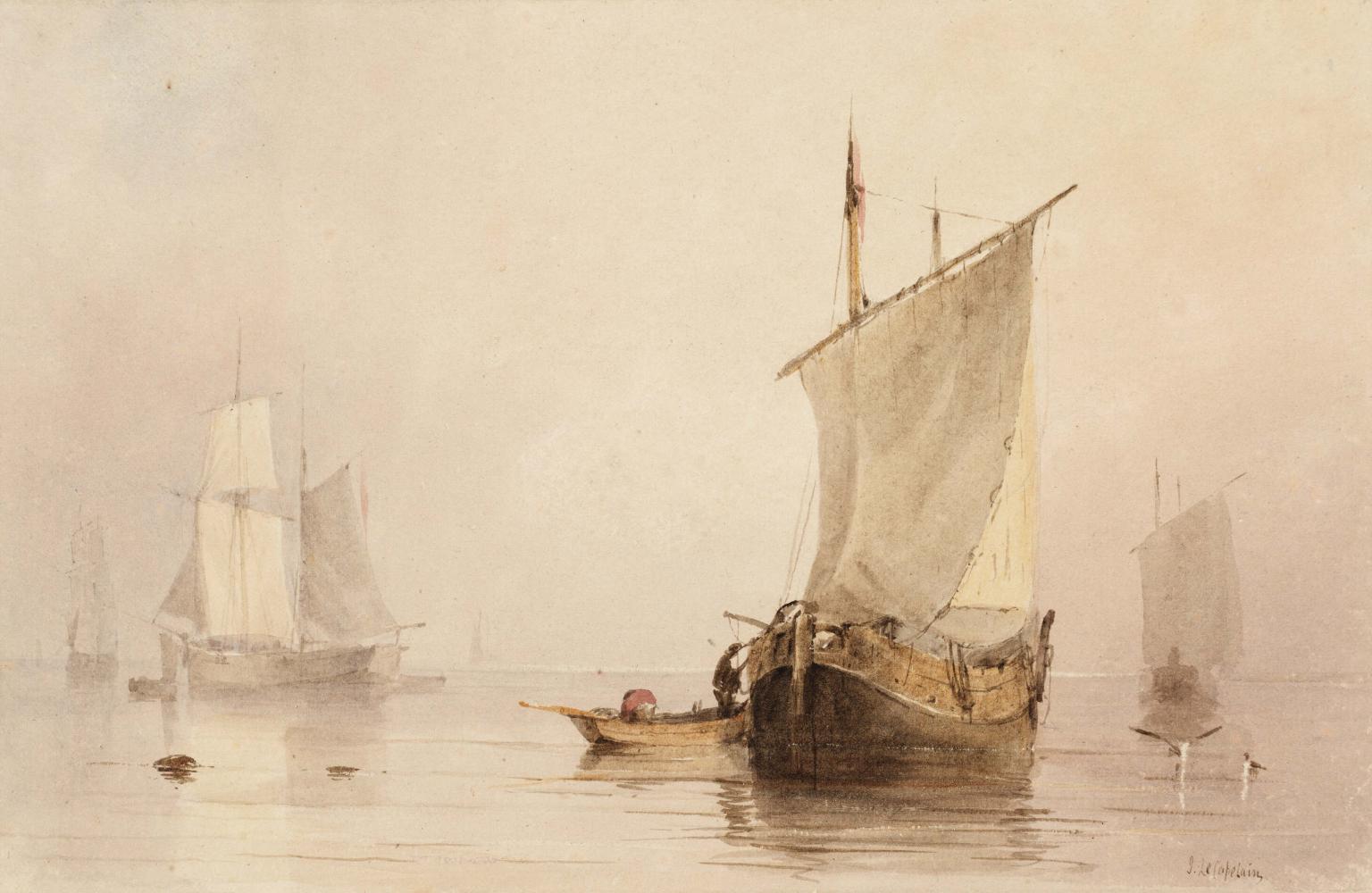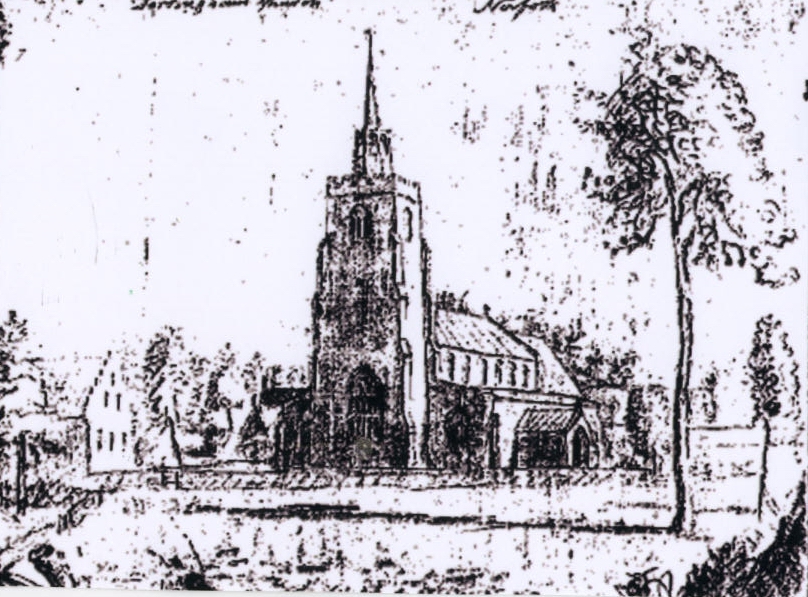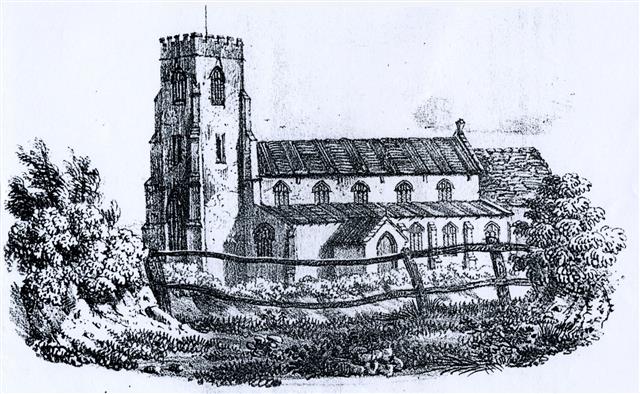One of the pleasures of living here in West Norfolk is the closeness of the sea. It is a constant delight to walk the coastal path, enjoy the salt marshes, linger on the beaches and watch the birds as they wheel and soar above the waves. The sea is our friend but one that needs to be respected.
Alfred Tennyson wrote of the sea in summer, ”drawling up the beach, brushing the shingle with coquettish lips, so gentle, so harmless...... “ But he warns in winter when it, ”is cold and grey , when fishermen stand helpless on the beach besides their little boats and the wildfowl chatter uneasily........come back then and see how dreadful is the change from meekness to ferocity.”
However, the Norfolk coastline has changed considerably over the centuries as seen in this map of medieval Fenland (source unknown). The waters of The Wash came much closer to the village than they do now. The rising land behind the village is in fact the ancient cliff line of the Wash. Ingoldisthorpe, Snettisham, Heacham, Wolferton all had thriving ports.
There is a document in the Record Office which gives,” a survey of all the ports, creakes and landing places within the countie of Norfolk.” It describes our village in this way,
“There is a haven or cricke called Dersingham Haven to which sayde town adjoyneth and belonging having habitation and householders therein to the numbers LXXV and ye shippes and other vessels yt lade or unlade there are licensed by warrent.”





